AI is completely changing how we create 3D content, and it’s happening faster than most of us realize. Remember when making a detailed 3D model meant spending weeks hunched over software that took years to master? Now AI tools are doing that same work in minutes. From game developers rushing to build prototypes to architects visualizing new spaces, this shift is rewriting what’s possible across industries.
But it’s not all smooth sailing. There are real questions about who controls the output, how good the quality really is, and who owns the intellectual property when an algorithm helps create something. For those of us making 3D content, this moment feels equal parts exciting and unsettling—we have new powers at our fingertips, but the ground keeps shifting beneath our feet.
The Role of AI in Transforming 3D Content Creation
AI is dramatically changing how creators approach 3D work. Tasks that once required specialized training and expensive hardware now happen through algorithms that can interpret basic instructions. Whether you’re designing intricate game environments or animating characters, AI-generated content is removing barriers that used to slow everything down.
Advances in Text-to-3D Technology
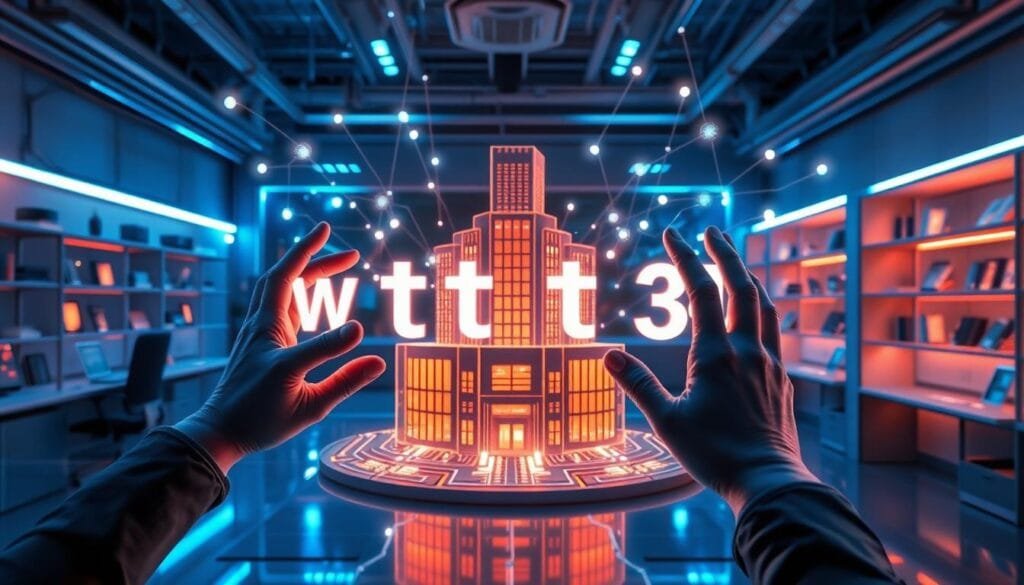
Text-to-3D technology lets creators generate complex 3D models just by describing what they want in plain language. Behind the scenes, generative algorithms trained on massive datasets of existing models analyze patterns and relationships between words and shapes to deliver surprisingly accurate results.
NVIDIA’s GET3D has gained attention for creating lifelike objects that actually look right from multiple angles. Using neural networks trained on millions of images and existing 3D assets, it can produce detailed models that previously would have taken days of meticulous work.
For practical use, think about an architect who needs to quickly test different building layouts, or a game developer who wants to populate a forest without modeling every tree by hand. Adobe is also making significant progress in this space (learn more here), which means these tools are becoming more accessible across creative fields.
Image-to-3D Innovations
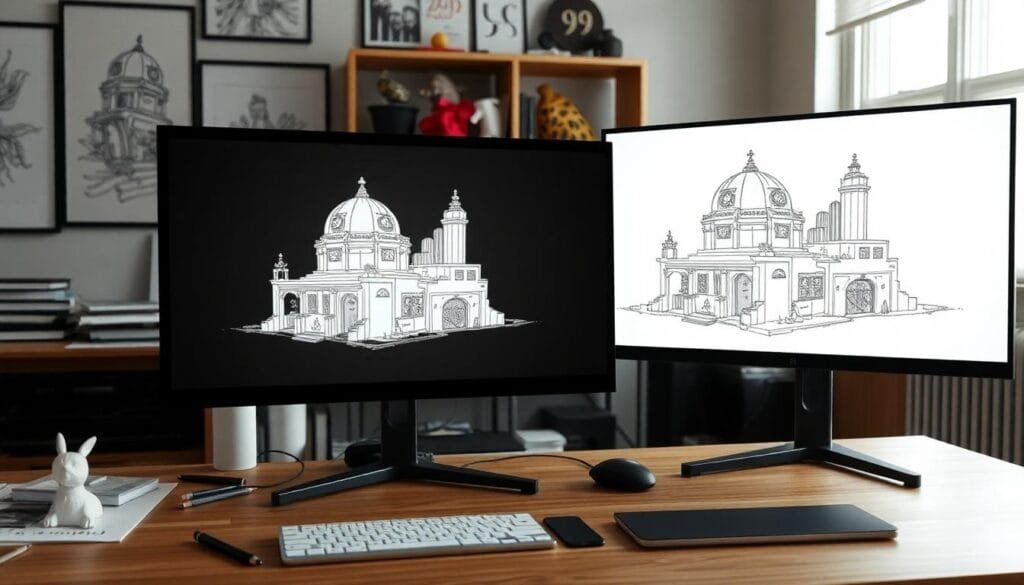
Image-to-3D technology expands creative possibilities by turning flat images into fully-realized 3D models. The AI analyzes shadows, perspective, and visual cues to rebuild what the three-dimensional form should look like.
Tools like Alpha3D have become game-changers for creators on tight deadlines. Instead of starting a model from scratch, you can take a reference photo and get a 3D version almost immediately.
Imagine you’re designing product visualizations for an online store. You could photograph your physical inventory once and transform each item into 3D models for customers to view from any angle. This approach eliminates significant bottlenecks in workflows across industries from e-commerce to game development (more about tools like Alpha3D can be found here).
Integrating AI with Motion Capture
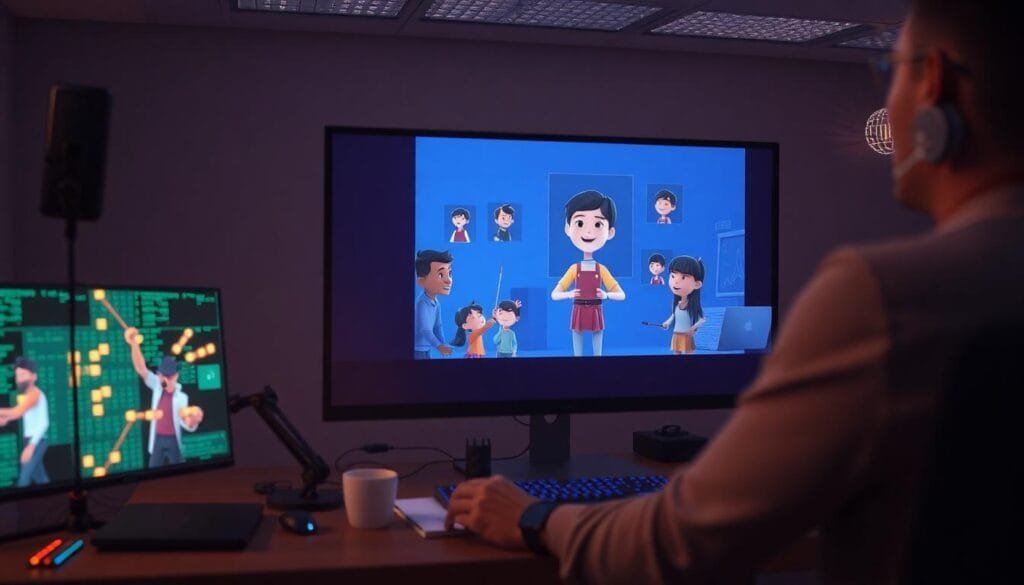
Motion capture used to mean expensive equipment, specialized studios, and actors wearing those weird suits covered in ping pong balls. AI has flipped this entire process by enabling motion capture from standard video footage. The algorithms can track body movements with remarkable accuracy and convert them into animations ready for games, films, or VR experiences.
Platforms like DeepMotion show how far this technology has come, letting creators upload basic video and receive smooth, usable animations. Similarly, Plask AI offers a way to create natural movement without any specialized hardware.
I was talking with an indie game developer last week who animated an entire character interaction sequence using just footage from his smartphone camera. A few years ago, that would have been unthinkable without a five-figure budget. Now small teams can create animations that rival what previously required entire studios (check out DeepMotion’s tools here).
The real story with AI in 3D creation isn’t just about making things faster—it’s about who gets to create in the first place. Text-to-3D, image-to-3D, and AI-driven motion capture are putting professional-grade tools in the hands of people who would have been locked out of these fields entirely due to technical barriers. The creative playing field is leveling in ways we’re only beginning to understand.
Applications of AI-Generated 3D Content Across Industries
AI-generated 3D content is reshaping how different industries operate, from game studios to architectural firms and marketing agencies. Let’s look at where these tools are making the biggest impact right now.
Game Development and Prototyping
Game development has always been resource-intensive, with asset creation eating up both time and budget. AI tools are changing this equation dramatically. Need a medieval castle or a fleet of futuristic vehicles? AI can generate first drafts of these assets while your human artists focus on adding the distinctive touches that make your game stand out.
The prototyping phase is where AI really shines. Developers can quickly test different environments, character designs, or gameplay scenarios without committing weeks of work to each iteration. This approach not only speeds up production but often catches potential issues earlier in the process. A recent Medium article highlights how smaller teams are using AI to compete with larger studios by drastically reducing their iteration cycles.
The cost implications are significant too. An indie developer I spoke with cut their asset creation budget by nearly 40% by using AI tools for initial drafts and environmental elements. This freed up resources for areas where human creativity still makes the biggest difference, like story and character development.
Streamlining Architectural Designs
For architects, visualization is everything. Being able to show clients what a space will actually look and feel like can make the difference between winning a project or losing it. AI-generated 3D content is becoming essential in this process.
During early concept development, AI tools can produce multiple design variations based on basic parameters. Instead of manually drafting each option, architects can generate several approaches and then refine the most promising ones. This approach is explored in detail in this Autodesk Design Make article, which examines how AI is changing architectural workflows while preserving the human creative element.
I recently saw a presentation where an architectural firm showed how they used AI to simulate different lighting conditions throughout the day for a proposed building. The client could immediately understand how the space would feel at different times—something that previously would have required days of specialized rendering work. This kind of rapid visualization doesn’t replace the architect’s expertise; it amplifies it.
Creative Advertising and Marketing
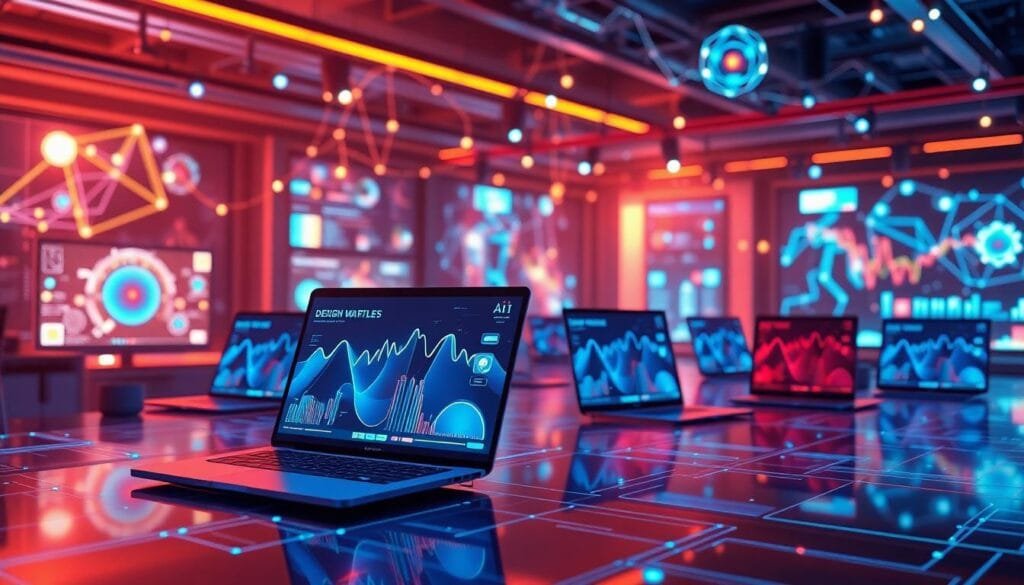
Marketing teams are embracing AI-generated 3D content to create more engaging campaigns while controlling costs. The ability to quickly produce customized visuals for different audiences or platforms has become particularly valuable.
Take product visualization as an example. Rather than organizing traditional photo shoots for every new item, brands can generate photorealistic 3D models that can be placed in any setting or viewed from any angle. The Marketing AI Institute has documented how this approach is transforming advertising production schedules and budgets.
Beyond static imagery, AI is making immersive experiences more accessible. A furniture retailer I worked with recently created a virtual showroom using AI-generated models of their inventory. Customers could “walk through” different room setups without leaving their homes, increasing engagement and, ultimately, sales. These applications aren’t theoretical future uses—they’re happening right now, changing how brands connect with consumers.
The common thread across these industries is that AI isn’t replacing human expertise—it’s transforming how that expertise is applied. By handling routine modeling tasks and generating initial drafts, AI frees creative professionals to focus on the distinctive elements that only humans can provide.
Challenges and Ethical Concerns
Despite the exciting possibilities, AI-generated 3D content comes with significant complications. From murky legal territory to inconsistent output quality, these challenges require thoughtful navigation. Let’s dig into the most pressing issues facing creators in this space.
Navigating Copyright and Ownership Issues
The question of “who owns what” gets complicated when AI does substantial creative work. Current copyright frameworks weren’t designed with AI in mind, leaving a legal gray area that affects everyone in the creative pipeline. Under U.S. law, works purely generated by AI currently can’t be copyrighted at all (read more about this issue), which creates uncertainty for creators investing time and resources into AI-assisted projects.
There’s also the thorny issue of what data these AI tools were trained on. Many systems learn from vast collections of existing 3D models and images—often scraped without explicit permission from their creators. This raises legitimate concerns about unintentional copyright infringement in the output. A designer I know recently discovered that an AI-generated character bore a striking resemblance to work they had published years earlier, raising questions about where inspiration ends and copying begins.
The international dimension makes this even more complex. A 2024 article by Cooley LLP highlights how different countries are developing divergent approaches to AI copyright issues. What’s protected in one market might be unprotected in another—a nightmare scenario for creators distributing work globally.
I’ve seen talented 3D artists hesitate to incorporate AI into their workflows precisely because of these uncertainties. Without clear legal frameworks that balance innovation with proper credit and compensation, we risk stifling the very creativity these tools should enhance.
Quality and Output Control Concerns
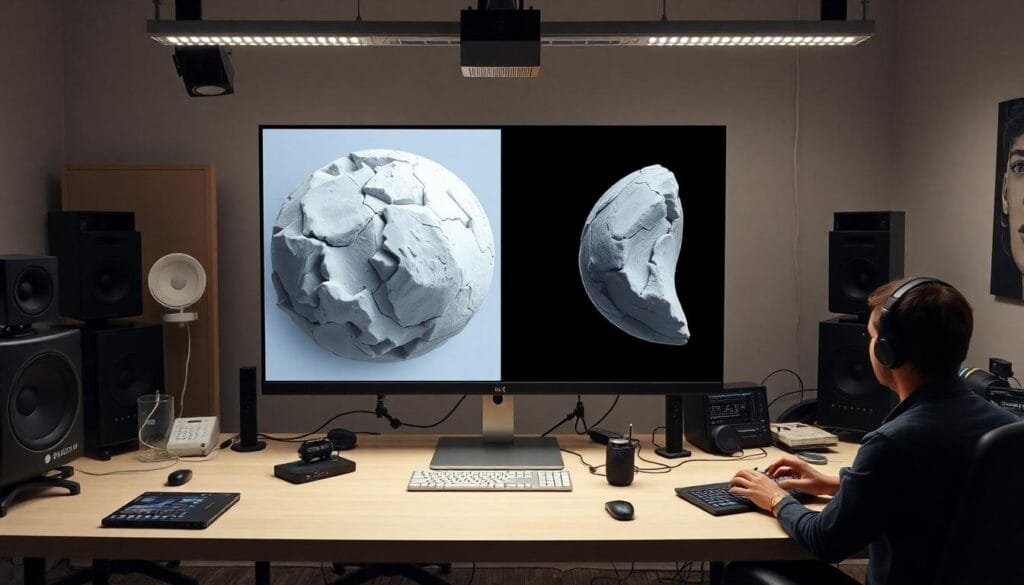
Let’s be honest—AI-generated 3D content can be amazing, but it’s inconsistent. One minute you’re looking at something remarkably polished, and the next you’re dealing with warped textures or physically impossible structures. Models like DreamFusion produce impressive results, but frequently miss the mark on finer details that human artists instinctively get right (discover more about quality concerns).
The lack of precise control frustrates many professional creators. You might have a clear vision in mind, but translating that into the perfect prompt feels like trying to describe a painting over the phone—something always gets lost in translation. I spent three hours last week trying to get an AI tool to generate a specific architectural element with the right proportions, and eventually gave up and modeled it manually in a fraction of the time.
Prompt engineering (crafting the perfect input text) has become almost an art form itself, with specialized communities sharing techniques for getting better results. It’s like learning another skill on top of your existing expertise—one that wasn’t part of the curriculum when most of us were learning 3D design.
Most professionals end up using AI outputs as starting points rather than finished products. A game environment artist I interviewed described her workflow as “AI for the first 30%, traditional techniques for the rest.” This hybrid approach works, but it somewhat undermines the efficiency gains that make AI appealing in the first place.
For AI-generated 3D content to truly transform creative industries, the next generation of tools needs to offer more granular control and consistent quality. The technology has made remarkable progress, but bridging the gap between what creators envision and what AI delivers remains a significant challenge.
The Future of AI-Generated 3D Content
The relationship between AI and 3D content creation is still in its early stages, with substantial growth ahead. As the technology matures, we’re seeing the emergence of more collaborative approaches and entirely new professional roles. Let’s explore what’s on the horizon.
Embracing Hybrid Workflows
The idea that AI will completely replace human artists has always been misguided. What’s actually happening is much more interesting—we’re developing collaborative workflows where AI and human creativity enhance each other.
It’s kind of like… you know when you’re cooking and someone else preps all the ingredients for you? So instead of spending half your time chopping vegetables, you can focus on the actual cooking techniques and flavoring? That’s what’s happening with AI in 3D creation—except sometimes the AI doesn’t quite dice the onions right and you have to fix them. But overall, it’s still saving you time.
Architects are using AI to generate multiple basic layouts in minutes, then applying their expertise to evaluate which designs best meet client needs and site requirements. Game developers use AI-generated assets as starting points that they then refine and integrate into coherent worlds. This partnership leverages the strengths of both: AI’s speed and pattern recognition alongside human judgment and creativity.
Over time, these workflows will become more intuitive as AI tools adapt to individual creators’ styles and preferences. Tools like NVIDIA’s GET3D are already demonstrating remarkable flexibility in generating assets that can be easily customized. The future isn’t about choosing between AI or human creation—it’s about finding the right balance between them.
Expanding Opportunities for Creators
As AI reshapes the 3D content landscape, we’re seeing entirely new professional roles emerge. These positions bridge the gap between technical capabilities and creative vision:
- Prompt Engineers: These specialists have mastered the art of crafting inputs that produce optimal results from AI tools. It’s a unique skill set combining technical knowledge with creative intuition—almost like being a translator between human vision and machine understanding.
- AI Tool Specialists: These professionals understand the strengths and limitations of different AI applications and how to integrate them into existing workflows. They help teams determine where AI can add value and where traditional approaches still work best.
These roles didn’t exist three years ago, but they’re becoming increasingly important as organizations adopt AI-powered workflows. A friend who runs a small design studio recently hired a “creative technologist” specifically to help integrate AI tools into their process—evidence that the job market is already adapting.
For independent creators, AI is lowering barriers to entry across the board. Platforms like Alpha3D enable small teams or solo creators to produce work that would have required much larger resources in the past. I recently spoke with a VR developer who’s creating an entire educational experience largely on her own, using AI tools to generate environments and assets that would have previously required a team of modelers.
The creative landscape is in flux, with traditional skills remaining valuable while new specialties emerge. Whether you’re a veteran 3D artist adapting to new tools or a newcomer leveraging AI to break into the field, the opportunities are expanding in unexpected and exciting ways.
As someone who has watched the evolution of digital content creation over decades, what strikes me about this moment is how it combines significant technical change with fundamental questions about the creative process itself. We’re not just getting better tools—we’re rethinking what it means to create in the digital age.
What’s Next for AI and 3D Creation?
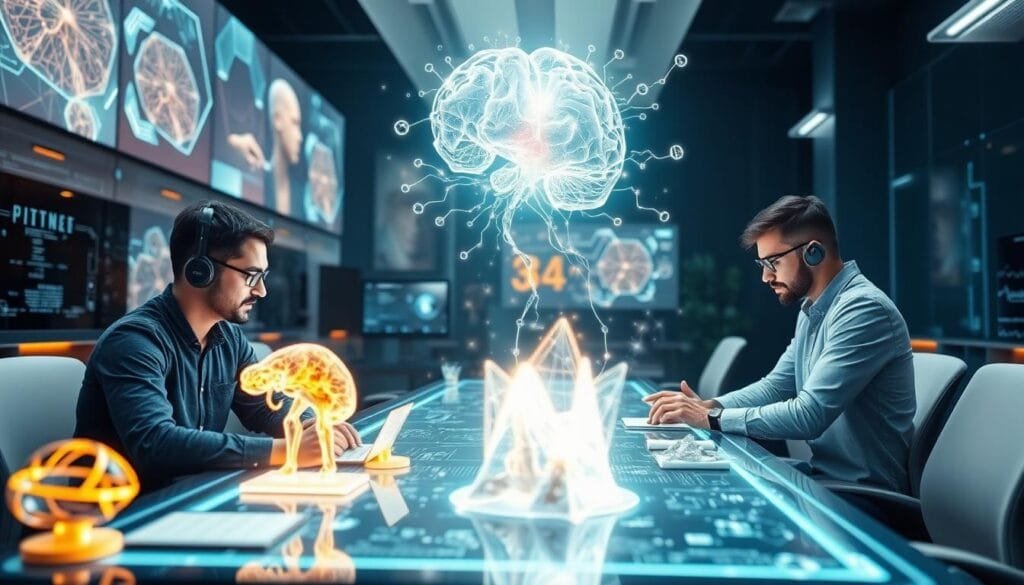
AI-generated 3D content is transforming creative workflows across industries in ways that were hard to imagine just a few years ago. The speed, efficiency, and accessibility offered by these tools open doors for creators at every level—from major studios to independent artists. While questions about quality control and intellectual property remain significant challenges, the trajectory is clear: AI and human creativity are becoming increasingly intertwined.
The most successful creators won’t be those who resist this change or those who blindly embrace automation. Instead, it will be those who thoughtfully integrate AI tools into their workflow, enhancing their unique creative vision rather than replacing it. Whether you’re a developer, designer, or entrepreneur, now is the time to experiment with these technologies and shape how they evolve.
What aspects of 3D creation would you most like to see AI improve? Are you already using AI tools in your creative process? I’d love to hear about your experiences navigating this rapidly changing landscape!
Disclaimer: This article may contain affiliate links through which we might earn a commission, though this comes at no additional cost to you as a reader.
FAQ’s
❓ How much technical knowledge do I need to use AI-generated 3D tools? (Click to Expand)
▶ Most modern AI-generated 3D tools are designed with user-friendly interfaces that require minimal technical knowledge to get started. While understanding basic 3D concepts helps, you don’t need extensive programming or modeling experience. The learning curve focuses more on crafting effective prompts and editing outputs rather than traditional 3D modeling skills.
❓ Will AI-generated 3D content replace traditional 3D artists?
▶ AI tools are complementing rather than replacing human creators. While AI excels at generating initial concepts and handling repetitive tasks, human expertise remains essential for refinement, artistic direction, and ensuring the final output meets specific creative and technical requirements. Most professional workflows are evolving toward hybrid approaches that combine AI efficiency with human creativity.
❓ How do I ensure my AI-generated 3D content is unique and doesn’t infringe on existing copyrights?
▶ Creating truly unique AI-generated content requires careful prompt engineering, significant customization of initial outputs, and thorough comparison with existing works. Consider using multiple generation attempts, applying substantial human editing to outputs, documenting your creative process, and potentially seeking legal advice for commercial projects. As copyright law evolves, staying informed about recent developments is also essential.
❓ What hardware requirements are needed for running AI-generated 3D content tools?
▶ Hardware requirements vary widely depending on the specific AI tool. Cloud-based solutions like Midjourney or DALL-E require minimal local processing power but depend on stable internet connections. Local tools with built-in AI capabilities typically need powerful GPUs with at least 8GB VRAM, modern multi-core CPUs, and 16GB+ RAM. Always check the specific requirements for your chosen tools.
❓ How can businesses measure ROI when investing in AI-generated 3D content technology?
▶ Businesses can measure ROI by tracking time savings in asset creation, comparing production costs before and after AI implementation, monitoring increases in output volume, evaluating quality improvements, calculating reduced iteration cycles, and analyzing new business opportunities enabled by faster production capabilities. Establishing baseline metrics before implementation enables more accurate performance comparison.






